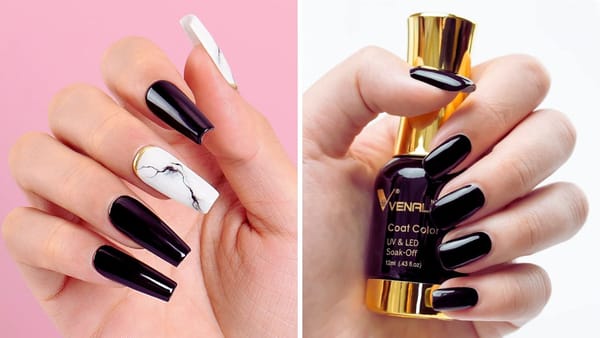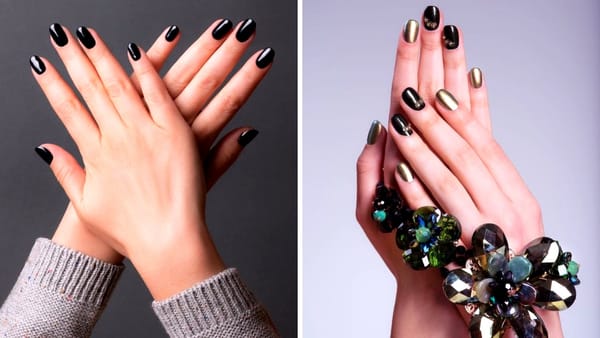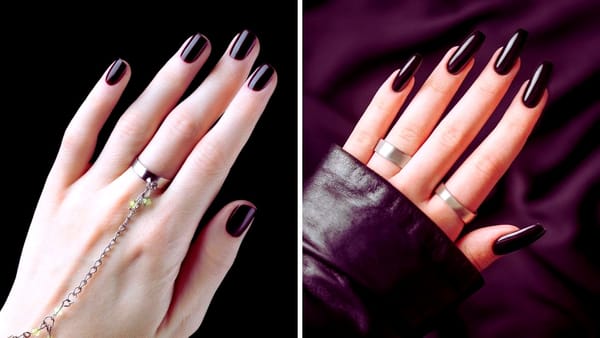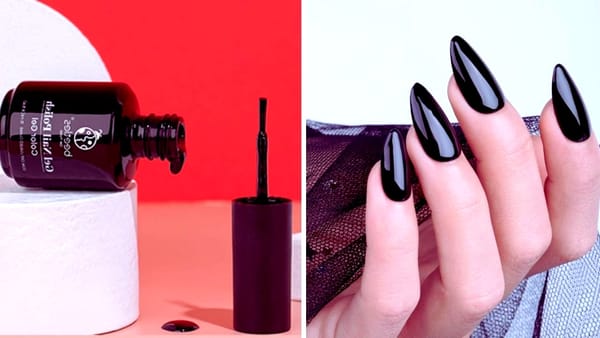Gel manicures have revolutionized the beauty industry with their long-lasting shine and durability. However, the frustration of peeling gel polish can tarnish the experience. In this comprehensive guide, we'll explore the secrets to keeping your black gel polish pristine and peel-free.
Key Takeaways:
- Proper nail prep is essential to prevent peeling gel polish.
- Application techniques, including thin layers and capping the free edge, are crucial.
- Aftercare, such as wearing gloves and moisturizing, extends the life of your gel manicure.
The Foundation of Flawless Gel Nails: Nail Prep
Before you even open your bottle of black gel polish, the success of your manicure lies in the preparation of your nails. Nail prep is a multi-step process that ensures your nail beds are clean, dry, and free of natural oils. Start by gently pushing back your cuticles and buffing the nail surface to create a slightly rough texture. This helps the gel polish adhere better to the nail plate, reducing the risk of lifting and peeling.
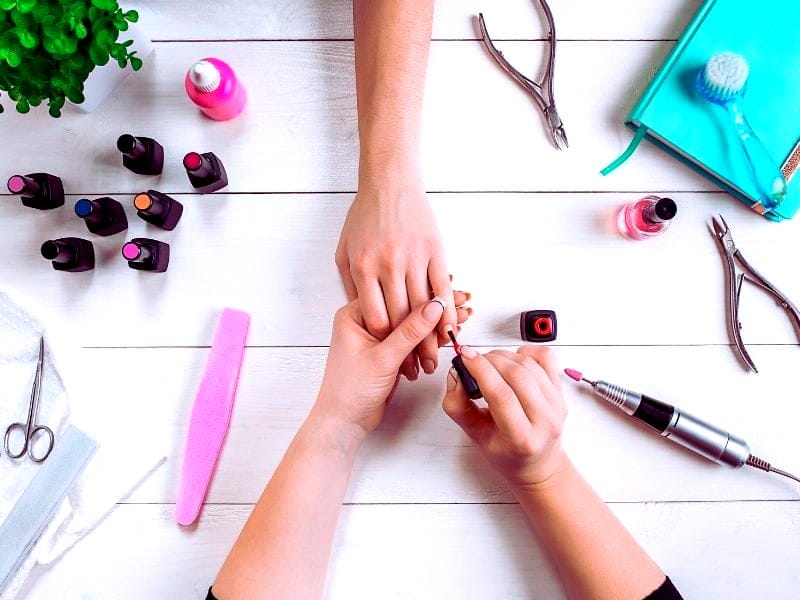
The Importance of a Good Base Coat
A base coat is not just an optional step; it's the anchor for your gel polish. Applying a thin layer of gel base coat and curing it under a UV or LED lamp creates a sticky foundation that grips the color coat. Skipping this step or applying a thick layer can lead to premature peeling, as the base coat won't cure properly, leaving a weak foundation for the subsequent layers.
Mastering the Art of Gel Polish Application
When it comes to applying gel polish, less is more. Thick layers of polish are more prone to peeling because they don't cure evenly under the lamp. Instead, opt for multiple thin coats, curing each one thoroughly. This not only ensures a stronger bond to the nail but also gives you that sleek, even finish that makes gel manicures so appealing.
Capping the Free Edge: A Crucial Step
One of the most common areas where gel polish begins to peel is at the free edge of the nail. To prevent this, always remember to cap the free edge with each layer of polish, including the base and top coats. This technique involves running the brush along the nail's tip, sealing the polish, and providing extra protection against chips and peels.
The Role of the Top Coat in Gel Manicures
The top coat is the protective shield of your gel manicure. It's not only responsible for that glossy finish but also for sealing in the color layers beneath. Apply a thin layer of top coat and cure it under the lamp. A good quality top coat can be the difference between a gel manicure that lasts for weeks and one that peels within days.
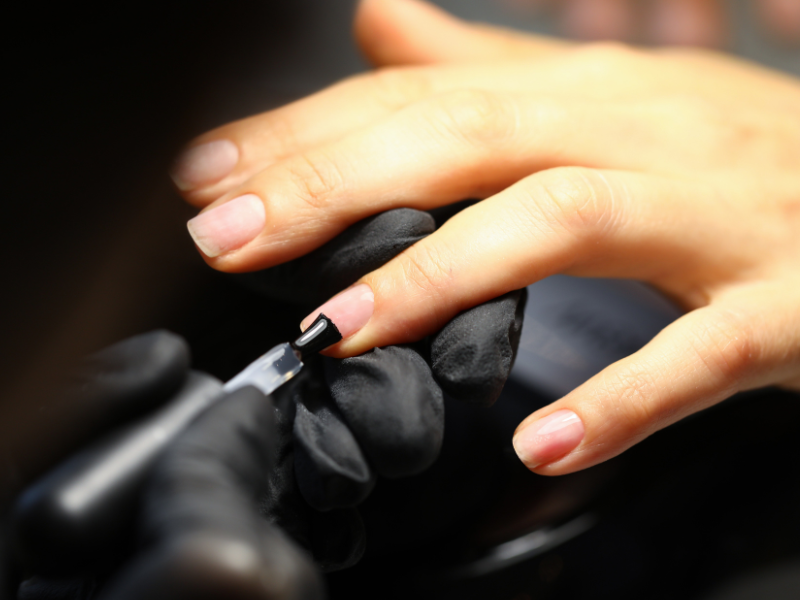
The Science Behind Gel Polish Adhesion
When pondering the question, "How do you keep black gel polish from peeling?" it's essential to understand the science behind gel polish adhesion. Gel polish adheres to the nail plate through a chemical bond that forms between the polish and the natural oils of the nail. Proper nail prep is crucial, as it ensures that the nail surface is free of oils and debris, which can interfere with this bond. Applying thin layers of gel polish is also key; thick layers may not cure properly under LED or UV lamps, leading to lifting gel polish. Remember, a thinner layer will bond more effectively, reducing the chances of peeling gel polish.
Moreover, the nail bed plays a significant role in the longevity of a gel manicure. Healthy nails with a well-maintained cuticle area provide a better foundation for gel polish. Using cuticle oil regularly can help maintain the health of your nail beds, but be sure to cleanse the nail plate thoroughly before applying gel polish. Nails prepped correctly, with attention to removing excess cuticles and ensuring the nail is free from natural oils, will hold onto the gel polish more effectively, preventing the frustrating experience of gel nails peeling.
Understanding the Chemistry of Gel Polish
When considering how to keep black gel polish from peeling, it's essential to understand the chemistry behind gel nail polish. Gel polish comprises polymers that harden under UV or LED lamps, creating a durable bond with the nail plate. However, this bond can be compromised if the nail surface isn't prepped correctly or if the polish isn't cured properly. Ensuring that each layer—from the base coat to the top layer—is exposed to the correct amount of UV or LED light is a crucial step. Too little exposure and the polish remains semi-liquid, too much and it becomes brittle, both leading to peeling.
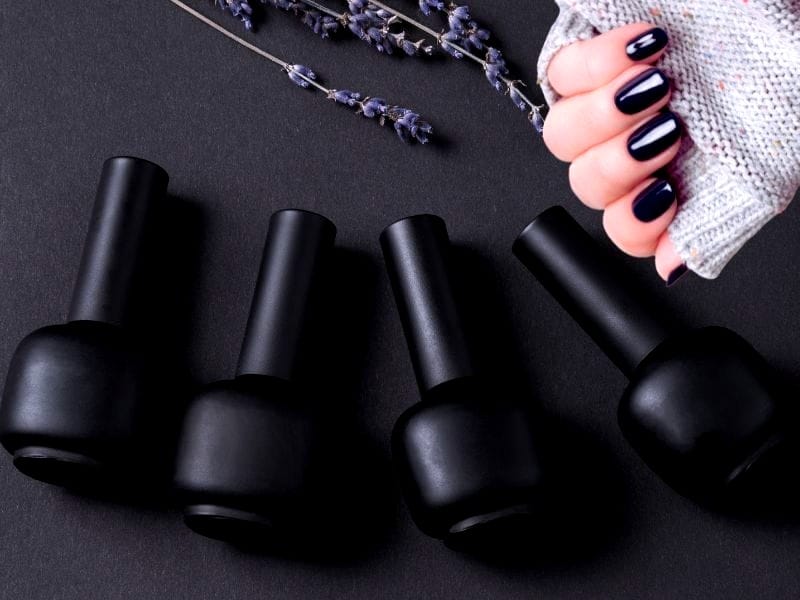
Moreover, the molecular structure of gel polish is designed to adhere seamlessly to the natural nail, but this can be disrupted by natural oils or harsh chemicals. Before applying gel polish, it's important to dehydrate the nail bed and remove any oils with a good nail prep. This creates an optimal environment for the gel to cling to. Skipping this step or doing it haphazardly can result in lifting gel polish, as the oils prevent the gel from forming a strong bond with the nail plate.
Avoiding Harsh Chemicals and Conditions
Your daily activities can be the nemesis of your gel manicure. Exposure to harsh chemicals, like cleaning agents, can break down the gel polish, leading to peeling. Always wear gloves when washing dishes or using cleaning products. Similarly, avoid hot water and harsh conditions that can weaken the polish's bond to the nail.
Keeping Nails Moisturized and Protected
It may seem counterintuitive, but keeping your nails and cuticles moisturized is essential for a long-lasting gel manicure. Use cuticle oil daily to maintain the flexibility of your nails and prevent the rigid gel from peeling away from a dry nail bed. However, ensure your nails are oil-free before applying polish, as oils can prevent proper adhesion.
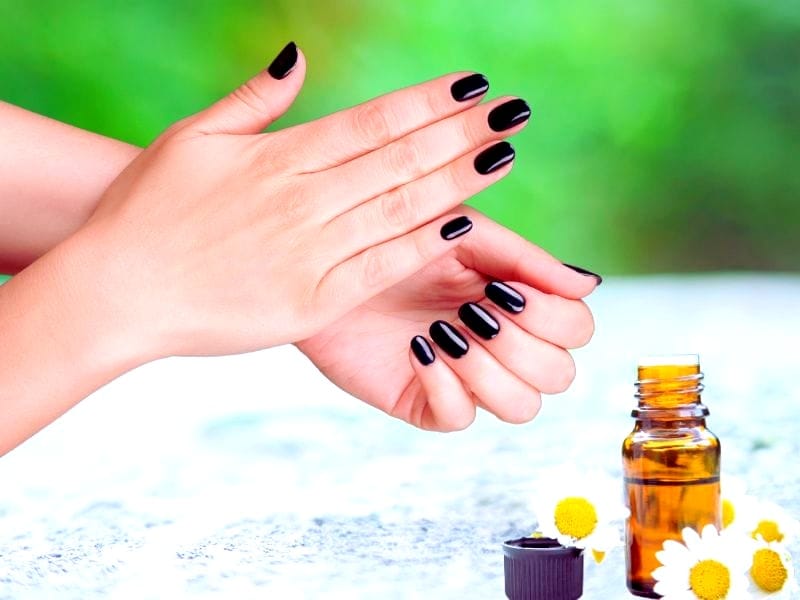
The Curing Process: Getting It Right
An under-cured gel polish is a recipe for peeling. Make sure to use a lamp that is compatible with your gel polish brand and cure each layer for the correct amount of time. An old lamp may not provide the necessary strength, so replace LED lamps as recommended by the manufacturer to ensure a full cure.
When to Use Builder Gel
For those with weak or peeling nails, a layer of builder gel can provide extra strength. Apply a thin layer of builder gel after the base coat and cure it before proceeding with the color. This creates a more substantial foundation, reducing the likelihood of your gel polish peeling.
Aftercare: Extending the Life of Your Gel Manicure
Once your gel manicure is complete, the aftercare is as important as the application. Avoid activities that can lead to chips and peels, such as opening cans or typing aggressively. Keep your nails moisturized, and if you notice a small lift or peel, resist the urge to pick at it, as this can lead to further damage.

Summary
Keeping your classy black gel polish from peeling is all about meticulous preparation, careful application, and diligent aftercare. By following these steps, you can enjoy a flawless, long-lasting gel manicure that resists the common pitfalls of peeling and chipping. Remember, the key to success lies in the details, from prepping your nails to protecting them after the polish is applied.
FAQ Section
How often should I use cuticle oil when I have a gel manicure?
You should apply cuticle oil at least once a day to keep your nails and cuticles moisturized. This helps maintain the flexibility of your nails and prevents the gel polish from peeling away from a dry nail bed.
Can I use regular nail polish over my gel base coat?
It's not recommended to use regular polish over a gel base coat, as the formulas are designed to work differently. Regular polish doesn't cure under a lamp and may not adhere properly to the gel base, leading to peeling.
How can I safely remove gel polish without causing damage to my nails?
To remove gel polish, gently file the top layer to break the seal and soak your nails in acetone. Wrapping your nails in foil with a cotton ball soaked in acetone can help speed up the process. Never peel or scrape off the polish, as this can damage the nail surface.




